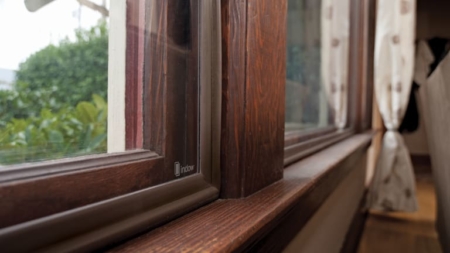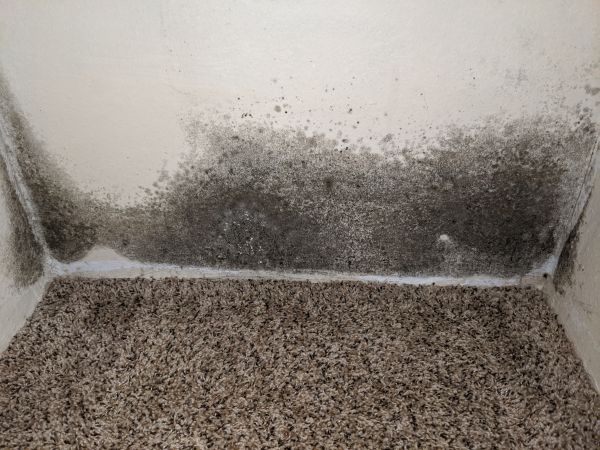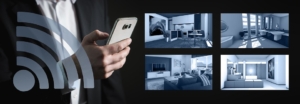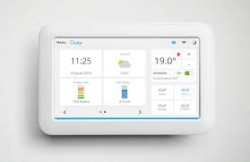Sick Building Syndrome comprises of various non-specific health symptoms that appear to be related to spending time in a building (EPA, 2009). To learn more about SBS and the contributing factors of SBS, please see our previous article.
Various buildings across the globe have been surveyed for SBS and studied further. An example of a building that was surveyed for SBS was a multistory, centrally air-conditioned Airport Authority of India building in New Delhi City. The building was designated to be airtight and therefore energy efficient with heating and cooling. When the indoor air quality was studied, a direct relation was found between SBS symptoms and poor air quality, particularly elevated carbon dioxide levels. Employees that reported the highest amount of SBS symptoms were on a floor with the highest carbon dioxide levels and the poorest ventilation. The two most common symptoms were headache (51%) and fatigue/lethargy (50%).
There are solutions to prevent and control SBS:
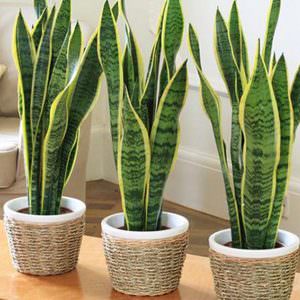
Sansevieria (snake plant)
- Increase ventilation rates and air distribution. HVAC systems should meet ventilation standards in local building codes and should be maintained properly to ensure desired ventilation rates. 8.4 air exchanges per 24 hour period of recommended by the ASHRAE (American Society of Heating, Refrigeration and Air-Conditioning Engineers). Outdoor vents may be helpful, such as in a restroom.
- Implement UV-C light in the HVAC system. This short-wavelength ultraviolet light can kill or inactivate bacteria, viruses, mold, and other organisms.
- Replace water-stained ceiling tiles. Replace water-stained carpet with new carpet or install stone, ceramic, or hardwood flooring.
- Roof shingle non-pressure cleaning for removal of algae, mold, and other allergens.
- Plants, such as sansevieria (snake plant) and golden pothos, can help to purify the air of toxins such as formaldehyde and xylene, according to a NASA Clean Air study.
- Use paints, solvents, and adhesives in well-ventilated areas and during periods of low or no occupancy.

Natural lighting for an office (source: home-designing)
- Vacuum regularly with a HEPA filter vacuum cleaner to collect and retain 99.97% of particles down to and including 0.3 micrometers.
- Non-toxic, biodegradable cleaning products without added artificial scents are better for the environment and for people.
- Use natural lighting when possible. Frosted glass and skylights provide access to natural lighting. Adjust the refresh rates on computer screens if needed.
- A community space for employees, such as an outdoor garden or indoor quiet area with plants and seating areas, can be rejuvenating.
- Keep clutter out of office spaces and rooms at home to make areas more pleasant to work and live in.
SBS tends to occur more often in buildings that are occupied by a lot of people, such as schools, and open-plan offices. If employees report symptoms, a survey should be arranged that covers the frequency of symptoms and whether they improve outside the building. Workplace stress can also contribute to SBS, so organizing and prioritizing the workload can help employees to reduce stress. Employees should also take regular screen breaks of 5-10 minutes for every hour of sitting at a desk. If weather permits, going outside for fresh air and a short walk during breaks and lunch can help.
Resources:
The Environmental Protection Agency’s Indoor Air Facts – Sick Building Syndrome
The Environmental Protection Agency’s Guide to Indoor Air Quality
National Institute for Occupational Safety and Health (NIOSH)
Occupational Safety and Health Administration (OSHA)
Case Study/Example listed in second paragraph: Goyalc, R., Guptaa, S., Khareb, M. Sick Building Syndrome – A case study in a multistory centrally air-conditioned building in the Delhi City. Building and Environment, August 2007. Vol 42 (8), 2797-2809.

